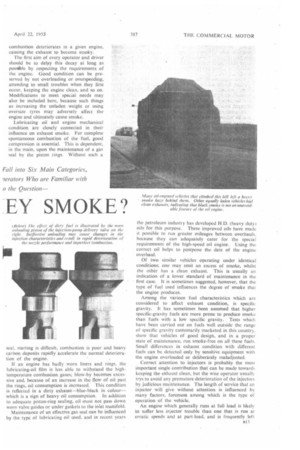He Started with Steam Wagons
Page 45

Page 46

Page 47

If you've noticed an error in this article please click here to report it so we can fix it.
MAY I add my sincere congratulations to those which you have already received, on the attainment of your Golden Jubilee, also upon the production of the Souvenir Number of The Commercial Motor which— and especially to one of the older members of the industry—is of surpassing interest.
I was especially intrigued by the photographs and
descriptions of the Yorkshire steamers, as I started my working life in the shops of the makers in 1914 and actually helped to build the Chiswick gully emptier pictured on page 207, which I remember well. This was in the time of the general managership of Mr. W. J. Lewin, whose forceful personality and engineering brilliance I also recollect so well.
I think that the Richmond wagon illustrated on page 199 must be more modern than the date given, as it has a vertical engine. I am not certain of the date of the change from the horizontal tothe vertical engine, but I think it must have been about 1910-12.
Lowestoft. J. Ross.
Technical Manager,
Eastern Coach Works, Ltd. one small point may well undo all the work expended in other directions.
Possible reasons why some engines smoke whereas others do not may be grouped under these main headings: (1) Differences in combustion-chamber design; (2) poor treatment of the engine in service; (3) incorrect lubricating oil used; (4) inferior mechanical condition of the engine: (5) wrong oil fuel used, and (6) incorrect adjustment and maintenance of the fuel-injection equipment.
The first item is outside the scope of this article, but it is well to remember that combustion-chamber design does vary from make to make and does, to some extent, explain the propensity 'of some engines to smoke more than others. Nevertheless, all engines have clean exhausts when delivered by their manufacturers, and it is the remaining five items Which can collectively determine the rate at which the efficiency of combustion deteriorates in a given engine. causing the exhaust to become smoky.
The first aim of every operator and driver should be to delay this decay at long as possible by respecting the requirements of the engine. Good condition can be preserved by not overloading or overspeeding, attending to small troubles when they first occur, keeping the engine clean, and so on. Modifications to meet special needs may also be included here, because such things as increasing the unladen weight or using oversize tyres may adversely affect the engine and ultimately cause smoke.
Lubricating oil and engine mechanical condition are closely connected in their influence on exhaust smoke. For complete spontaneous combustion of the fuel, good compression is essential. This is dependent, in the main, upon the maintenance of a gas seal by the piston rings. Without such a




























































































